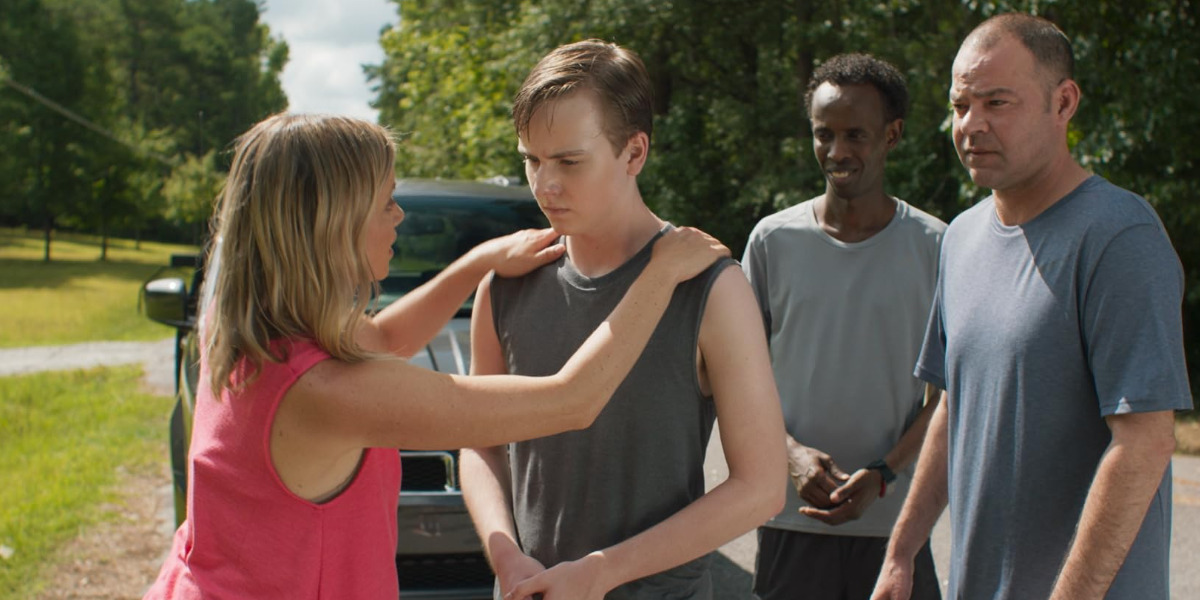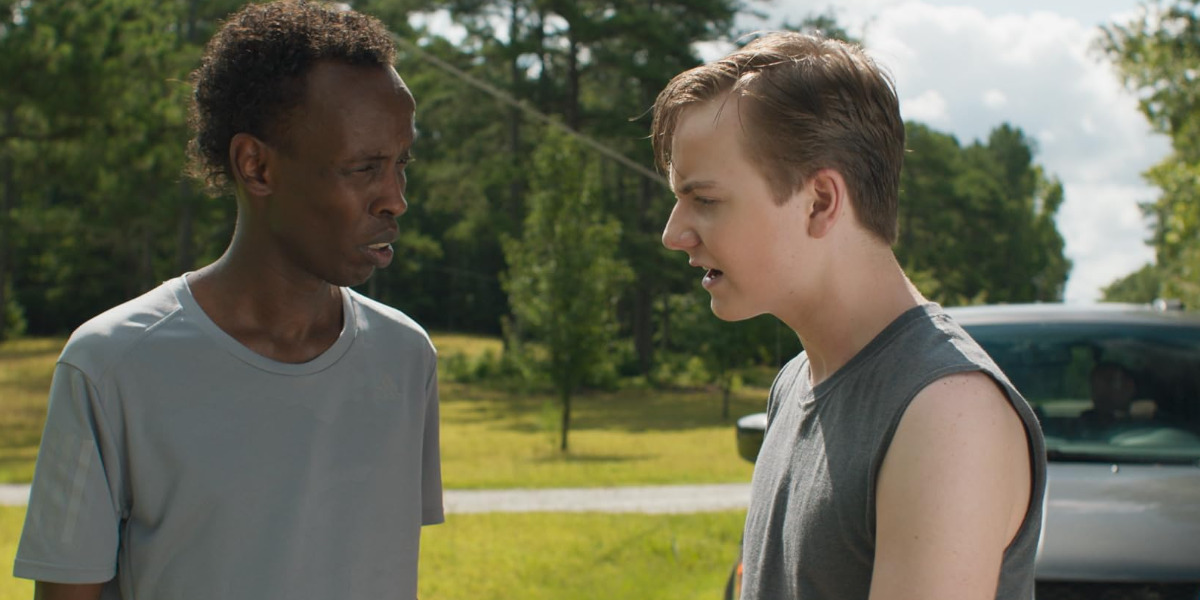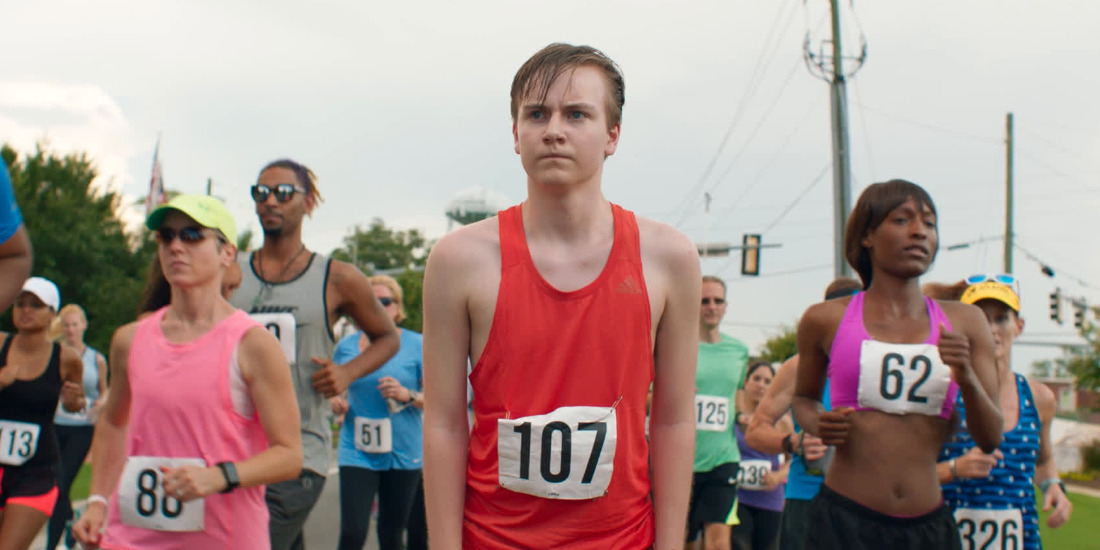Kim Bass’ sports drama film, ‘Tyson’s Run,’ follows the inspiring athletic journey of a 15-year-old kid whose passion and dedication drive him toward a daunting marathon’s finishing line. Tyson Hollerman, diagnosed with high-functioning autism at a young age, joins public school after being homeschooled his entire life. However, as the boy deals with ignorant bullies and attempts to find a way to earn his father’s pride, he discovers an inclination toward running after crossing paths with former athlete Aklilu. As a result, the boy decides to participate in the city’s first-ever marathon, steadfast in his aspiration to become a winner.
The film maintains its sporty feel throughout the narrative, following Tyson’s motivational journey as the boy faces many ups and downs in his life. Simultaneously, the story also presents an authentic representation of high-functioning autism, delving into the intricacies of the neurodivergent disorder. Therefore, as teenage Tyson Hollerman helms the film, embodying both cornerstones of the narrative, viewers are bound to grow curious about the young athlete’s connection to reality.
Director Bass Was Inspired By a Real Boy
The titular character in ‘Tyson’s Run’ is inspired by an actual real-life boy’s story that motivated Director Bass, who wrote the screenplay, to pen the film’s narrative. The filmmaker, best known for his work on projects such as ‘Sister, Sister’ and ‘A Sunny Day in Oakland,’ has a penchant for basing his films/TV shows on real-life instances or inspirations. Thus, even though Bass rarely works on autobiographies, his work remains intrinsically tied to reality in some way or another.

In the case of ‘Tyson’s Run,’ Bass lifted similar base inspiration from real life, which became the nucleus that the rest of the narrative got built around. The filmmaker discussed the same in detail in a conversation with Syracuse, confirming that a young boy “who didn’t want to run anymore because he felt he would never be as fast as the other kids” was the inspiration behind his film.
Expanding upon the same, Bass said, “It’s not about how to be as fast as everyone else. It’s about having determination, belief in yourself, faith, and keep going ultimately. You can overcome all kinds of things and come out on top, even though you think you’ve been left behind.”
As such, even though the exact details of the real-life inspiration behind Tyson Hollerman remain elusive, perhaps intentionally so, the character remains rooted in reality. However, the character’s sense of realism shines through even more through his identity as a kid with autism, cast in a protagonistic role in a sports drama. Consequently, the film strengthens Tyson’s ties to reality through the attentive portrayal of an underrepresented demographic.
Actor Major Dodson and Young Athletes with Autism
In following Tyson Hollerman’s athletic journey, the film delves into the character’s experiences as a young autistic boy traversing through teenagehood in a social setting that often works against his favor. Nevertheless, his perseverance and dedication help him find his footing as he undertakes a challenge that becomes momentous for him and his loved ones. While Bass’ initial inspiration in crafting this narrative for Tyson remains, the character also ends up sharing his experience with real-life athletes who share his diagnosis.

For instance, viewers might see a reflection of Tyson’s dramatized tale in the real-life story of Mikey Brannigan, one of the most well-known runners with autism. Diagnosed as a toddler, Brannigan’s experiences as an autistic athlete— with running as his sport of choice— remain reminiscent of the narrative depicted in ‘Tyson’s Run.’ Initially, the real-life athlete’s passion for running drew his parent’s concerns regarding his safety.
Nonetheless, once Brannigan started organizing the activity, his skill saw drastic improvement. “I watched it happen,” Brannigan’s mother told Find a Top Doc. “During those two years, something shifted, something opened up, and his thinking became useful in the way of academics.”
“I think that Mikey [Brannigan] learned right away that when you win, there’s an admiration. You are looked up to by other people. Up to that point, he’d never had that. He was mostly rejected and disciplined. He strives not just for the calming of the [stereotype], but to gain respect from his typical peers and be accepted by them.”
Thus, even though Brannigan hasn’t been labeled an official inspiration for Tyson Hollerman’s character, their shared experiences as autistic runners intrinsically instill a sense of resemblance between their stories. Likewise, the fact that the actor portraying Tyson’s character, Major Dodson, is on the autism spectrum himself further helps infuse the character with authenticity.
While Bass wasn’t aware of Dodson’s diagnosis before casting him for the role, Dodson’s lived experiences helped him actualize Tyson in a realistic manner, ultimately benefiting the character. Notably, the filmmaker labeled Dodson as the perfect choice for the character, emphasizing how he “didn’t look like somebody trying to pretend.” Consequently, through all these realistic tidbits, Tyson Hollerman’s character retains his connections to reality without being a biographical account of an eponymous athlete.
Read More: Best Movies About Autism on Netflix


You must be logged in to post a comment.